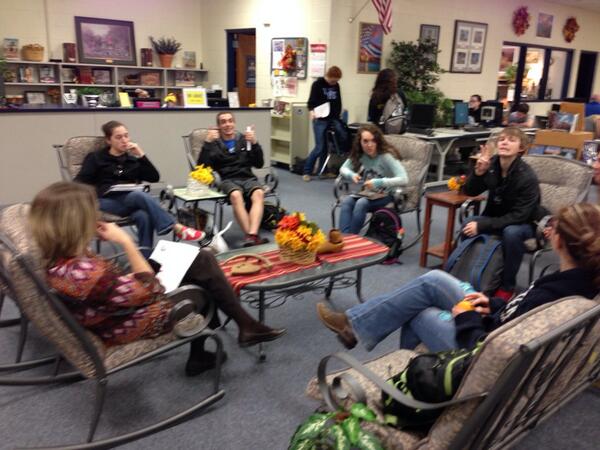Our local newspaper has published a series of articles about the local and national controversy surround the Common Core. Although I'm not a Common Core enthusiast and have many of my own criticisms of education policy, I felt strongly compelled to respond to the following piece published from a district resident. School board elections for our community will be held Tuesday of next week. The letter to the editor and my response follow.
Letter: Education is rotten at the "Core"
I first became enlightened to Common Core and its perverted morality while listening to Bott Radio 90.1 FM — a Christian station.
The segment was “The Complete Story” as Dick Bott interviewed Mark Ellis. In the interview, Mark Ellis tells how this sex education (which is sexual perversion) is tied into the Common Core Education Curriculum. You can also go to www.bottradionetwork.com, to “The Complete Story”-“Archives” for the month of January 2014 to hear his interview.
Common Core is another Big Government attempt to get an even more firm grip on controlling education in America. Whereby, it can contaminate the minds of the next generation with a humanist, post-Christian, post-modern philosophy and morality. Common Core is designed to effectively eliminate the private, the Christian, the home school movement and enterprise in America, while solidifying its control on public education.
They tell us it will correct their last program that failed. Why should we trust them now?
We have witnessed in recent days how out of control our National Government has become with: The IRS’ strong-arm abusive tactics; ObamaCare curtailing religious rights; and National Security Administration-overreach into our personal affairs.
If they can fully implement Common Core, they will be able to further solidify their power and control to silence the voice, the virtues, and the values of Christians, while indoctrinating our children with the post-modern philosophy.
The Germantown School Board in Wisconsin rejected Common Core and so should our school boards. School Board Elections are coming up. I pray that you will go and vote.
“Righteousness exalts a nation, but sin is a reproach to any people.” — Proverbs 14:34.
My Response
I was very disappointed in the letter to the editor sent by
Dr. Gary Urich as he expressed his opposition to Common Core by linking the
math and English standards with sex education programs that he reports are
perverse. Dr. Urich’s position seems to link our local district, board, and
educators to these terrible claims about Common Core. While there have clearly
been major policy errors in the process of developing and implementing Common
Core, errors that our district cannot support, we believe that the efforts of
our teachers in aligning our curriculum to Common Core are worthwhile and not
to be cast aside because of political and ideological concerns that are not
relevant to the implementation of the standards in Bolivar. Our focus continues
to be providing the best learning experiences for the students in our
classrooms.
As high school principal, I worked closely with Dr. Urich’s
late wife Connie, who was very involved with Alpha House pregnancy crisis
center, in implementing our abstinence program at Bolivar High School. We have
taught and will continue to teach students in our required health classes that
abstinence until marriage is the only way to ensure mental, emotional, and
physical health. We have partnered with Alpha House, a faith-based community
organization, to present this information in a proper manner for our school
setting.
While we cannot control what happens in other areas of our nation,
our district reflects the values of our community and will continue to do so.
We have excellent teachers, administrators, and board members, with strong
moral values, who are concerned daily with the needs of children and act in
their best interest. It would be an injustice if the sweeping statements of the
anti-Common Core movement were tied to the work of these public servants.


